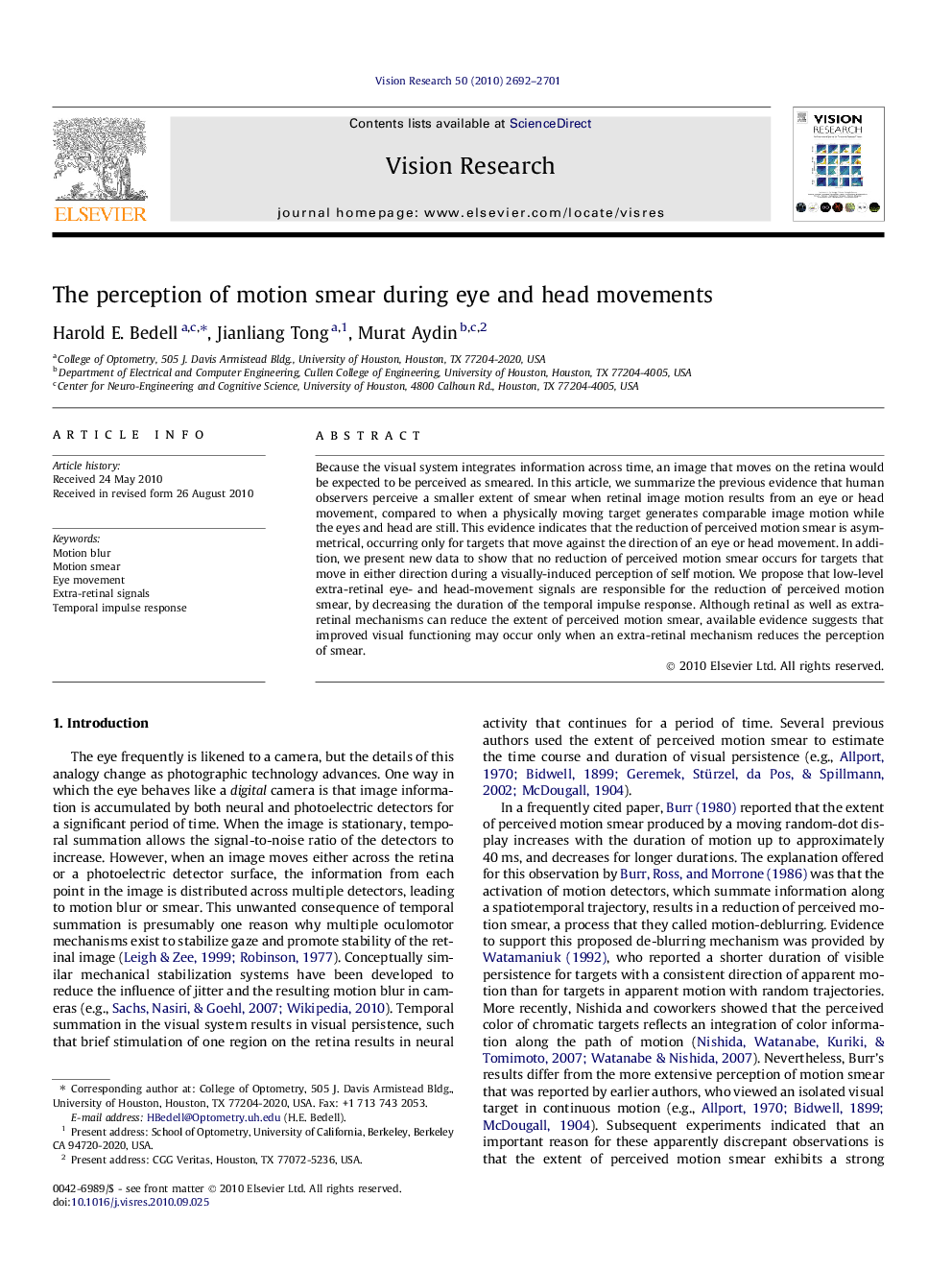| Article ID | Journal | Published Year | Pages | File Type |
|---|---|---|---|---|
| 4034223 | Vision Research | 2010 | 10 Pages |
Because the visual system integrates information across time, an image that moves on the retina would be expected to be perceived as smeared. In this article, we summarize the previous evidence that human observers perceive a smaller extent of smear when retinal image motion results from an eye or head movement, compared to when a physically moving target generates comparable image motion while the eyes and head are still. This evidence indicates that the reduction of perceived motion smear is asymmetrical, occurring only for targets that move against the direction of an eye or head movement. In addition, we present new data to show that no reduction of perceived motion smear occurs for targets that move in either direction during a visually-induced perception of self motion. We propose that low-level extra-retinal eye- and head-movement signals are responsible for the reduction of perceived motion smear, by decreasing the duration of the temporal impulse response. Although retinal as well as extra-retinal mechanisms can reduce the extent of perceived motion smear, available evidence suggests that improved visual functioning may occur only when an extra-retinal mechanism reduces the perception of smear.
Research highlights► Retinal image motion results in a smaller extent of perceived smear during eye and head movements than during fixation. ► This reduced perception of motion smear is restricted to target motion against the direction of the ongoing eye or head movement. ► Extra-retinal eye and head movement signals appear to reduce perceived motion smear by decreasing the duration of the temporal impulse response.
